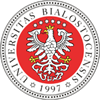Proszę używać tego identyfikatora do cytowań lub wstaw link do tej pozycji:
http://hdl.handle.net/11320/8878| Tytuł: | Co(n)texte et choix du verbe polonais dans la traduction : construction N0[+humain] + tomber |
| Inne tytuły: | Co(n)text and selection of Polish verb in translation: N0[+human] + tomber |
| Autorzy: | Cholewa, Joanna |
| Słowa kluczowe: | mouvement déplacement sémantique cognitive analyse contrastive movement change of position cognitive semantics contrastive analysis |
| Data wydania: | 2017 |
| Data dodania: | 5-mar-2020 |
| Wydawca: | Éditions du CIPA |
| Źródło: | Francontraste 3 : Structuration, langage et au-delà, Tome 2 : Sciences du langage, éd B. Pavelin Lešić, Zagreb 2017, s. 113-122 |
| Konferencja: | 3e Colloque Francophone International de l'Université de Zagreb « Structuration, langage, discours et au-delà », 8-10 avril 2016 |
| Abstrakt: | Tomber intransitif utilisé au sens de ‘choir, chuter’ avec le sujet humain dans le sens de déplacement sert à exprimer le mouvement de haut en bas. Il se traduit en polonais par paść/ upaść/ padać. Les formes perfectives polonaises (paść et upaść) décrivent chacune un type différent de déplacement : paść le mouvement contrôlé et volontaire, upaść le mouvement incontrôlé et involontaire. Si les deux formes sont acceptables, chacune apporte une interprétation qui lui est propre.
Puisqu’à tomber analysé correspondent les deux formes, ce verbe peut exprimer deux types de mouvement. Les phrases avec tomber qui peuvent être traduites aussi bien par paść que par upaść ont un double sens : soit celui du mouvement contrôlé et volontaire (la substitution de tomber par se jeter possible), soit celui de mouvement incontrôlé et involontaire (l’ajout du syntagme en perdant l’équilibre possible). L’impossibilité de traduire tomber par paść exclut le premier type de mouvement, limitant l’interprétation au deuxième (mouvement incontrôlé et involontaire). The French intransitive verb tomber used with a human subject in the sense of movement and change of position expresses the movement from top to bottom. It is translated into Polish with the forms paść/ upaść/ padać. Each of the Polish perfective forms (paść and upaść) describes another type of movement: paść controlled and purposeful movement, upaść uncontrolled and involuntary movement. If both forms are acceptable – each of them brings its specific interpretation. Since the analyzed verb tomber corresponds to both these forms in Polish, this verb can express both types of movement. Sentences with tomber which can be translated with either paść or upaść have a double meaning: the controlled and purposeful movement (operation of substitution by se jeter is then possible), or uncontrolled and involuntary movement (it is possible to add the syntagm en perdant l'équilibre). The inability to translate tomber as paść excludes the first type of movement, thus limiting the interpretation to the other (uncontrolled and involuntary movement). |
| Afiliacja: | Université de Białystok, Pologne |
| URI: | http://hdl.handle.net/11320/8878 |
| ISBN: | 978-2-930200-79-8 |
| Typ Dokumentu: | Preprint |
| Występuje w kolekcji(ach): | Materiały konferencyjne (WFil) |
Pliki w tej pozycji:
| Plik | Opis | Rozmiar | Format | |
|---|---|---|---|---|
| Cholewa_Joanna_Francontraste_2016.doc | 104,5 kB | Microsoft Word | Otwórz |
Pozycja jest chroniona prawem autorskim (Copyright © Wszelkie prawa zastrzeżone)

